![]()
Canon’s first APS-C mirrorless cameras are here, three and a half years after its first full-frame RF-mount option. After a brief time with what is effectively the Rebel replacement, there is a lot of camera here for $1,000.
Build Quality and Design
As with the Canon EOS R7 that was also announced today, the R10 is an original body design and it weighs less than one pound with a battery and SD card inserted. The layout features a nice slanted shutter button typical of Canon cameras, a front and rear dial for controlling a couple of different methods of exposure, a multi-controller joystick for moving focus points quickly, and a user-programmable four-way D-pad. There’s a dedicated AF/MF switch on the front with another programmable button.
![]()
![]()
![]()
![]()
One thing missing from this design is a third wheel for completing all three aspects of direct exposure control: shutter speed, aperture, and ISO. Instead of a third dial, we do get a D-pad that offers more customization options, so at least there is a trade-off.
The body style is familiar in the hands of Canon users overall, yet it’s been squished down to the point where there is very little room between the handgrip and lens. I developed a blister on one of my fingers from rubbing it against the lenses while using this camera, and my hands are only medium-sized. If the camera was taller or came with an optional grip extension like the EOS RP, I think my fingers would be able to angle into the narrow gap much better.
![]()
![]()
![]()
The door at the bottom of the grip holds the LP-E17 battery and a single UHS-II SD card slot. These are the smaller-sized batteries that are used in the Canon Rebel series and EOS RP. In a day of shooting around 700 photos, I had the battery drain nearly halfway. That’s better than I was expecting based on the size of the battery and the performance of the mirrorless camera.
Image Quality
The Canon EOS R10 sports a newly-developed 24.2MP APS-C sensor and the DIGIC X image processor. Canon is keeping tradition in having its mirrorless APS-C cameras feature a 1.6x crop versus the more commonplace 1.5x crop. This model has no in-body image stabilization, so stabilization would need to come from the lens used or the electronic stabilization offered in video recording.
![]()
![]()
![]()
Looking at the image files, the R10 produces reasonably decent results. To my eye, I see some crunchiness involved in the way it renders the tonality of a scene. That said, I only had minimal hands-on time with the camera and not much good light to work with.
Speaking of which, reviewing test shots taken across its 100 to 32,000 ISO range, it seems like around ISO 3,200 is when the images start to really break down. These days, I see most full-frame cameras show this around ISO 6,400 or 8,000, so this smaller APS-C sensor aligns with my expectations.
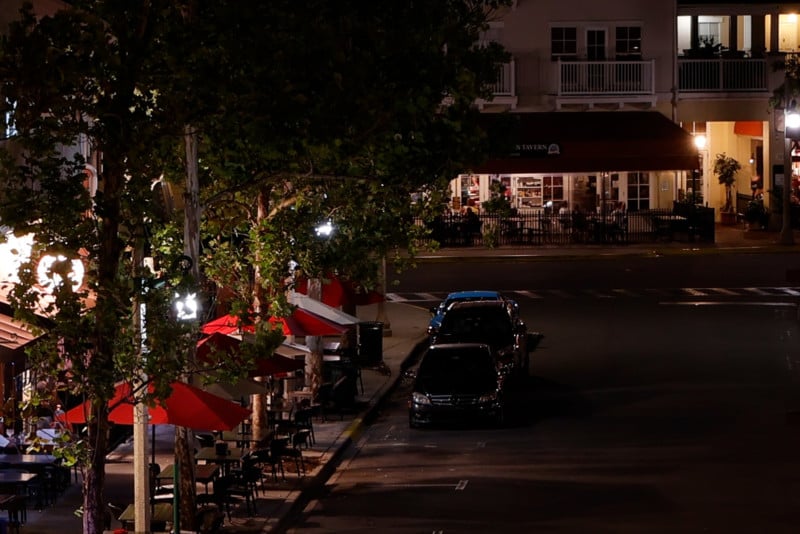

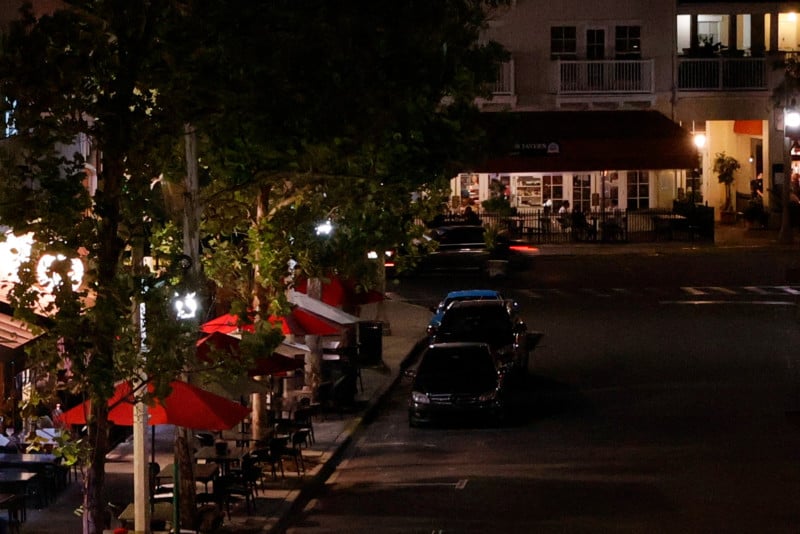
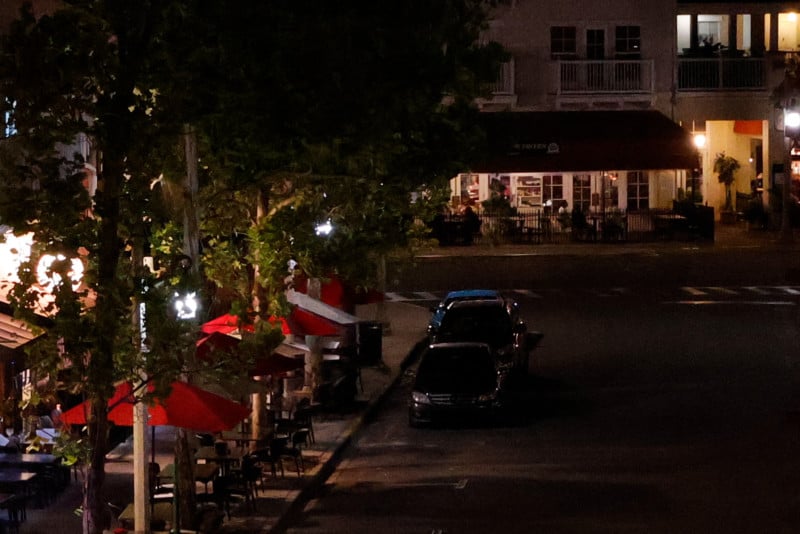
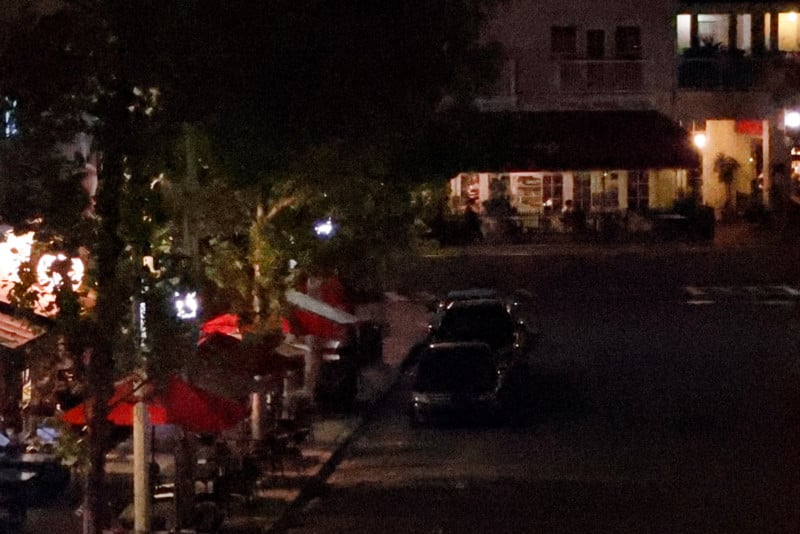
With a whopping 15 frames per second mechanical shutter, the EOS R10 far exceeds what others have done in this price range. I asked a Canon representative if there were any drawbacks to using the fastest mechanical shutter, and I was assured it retains the full experience and the full image quality while going all out. The camera can also do 23 frames per second with the electronic shutter, but because this is not a stacked sensor, there is a pronounced rolling shutter effect with fast-moving action.
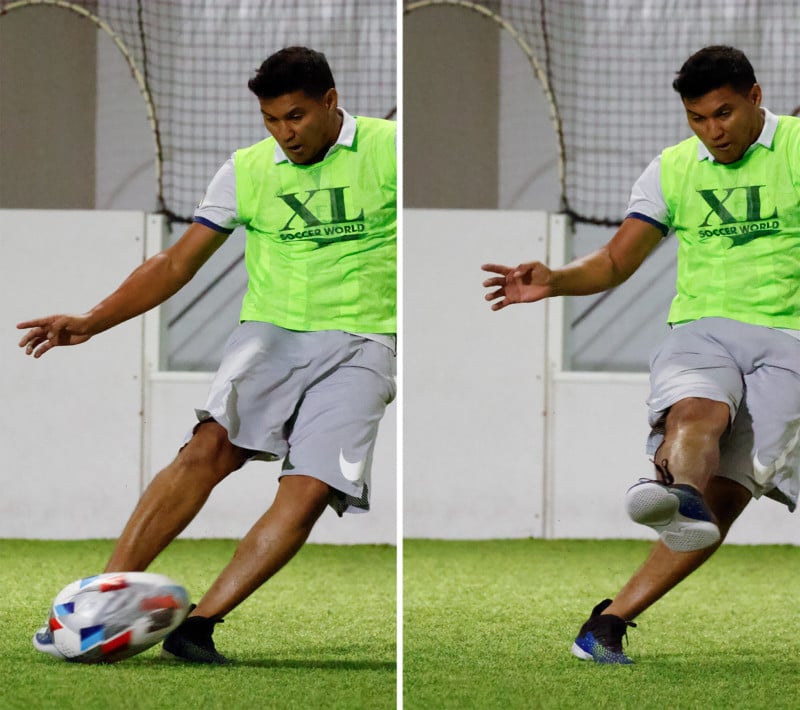
I learned that even though it does 23 frames per second maximum, it can only fire off 11 frames of JPEG+RAW before reaching the end of the buffer. It’s also essential to use a UHS-II card with the fastest write speed you can get your hands on. With a Delkin SD card that has a 250 MB/s write speed, it took 10 seconds to clear a full buffer versus 2.9 seconds it took with a Sony TOUGH G card that has a 299 MB/s write speed.
![]()
![]()
![]()
Autofocus
One of the most impressive aspects of the EOS R10 is the autofocus system. Canon claims that it has inherited its smarts from the $6,000 EOS R3 but not necessarily the speed. Again, this is not a backside-illuminated stacked sensor. This also means that it features the same subject recognition for humans, animals (including birds), and vehicles and can start tracking from anywhere in the frame.
I’ve been using the EOS R3 for half a year now, and for someone familiar with the camera’s autofocus capabilities, it was an easy switch to the R10. Probably my favorite aspect of these cameras is how little I need to consider focus areas and the position of my focus point now. When my subject enters the frame, it is already trackable just by initiating autofocus. There’s no time wasted in repositioning the focus point or changing the coverage of the focus area: the camera does the work. When there are multiple subjects in the frame, arrows show up outside the tracking box and I can switch to the target I want.
![]()
![]()
The knock to the R10 with all of this is the reliability. It is a smart camera, but the autofocus speed and lock-on tracking aren’t always going to get the job done. This could be a matter of refining the autofocus characteristics, which can be done in the menu. I essentially set it up the way I have my EOS R3, but consistency in following a tracked subject wasn’t perfect.
The Lowest Cost of Entry into RF and the Future of Canon
The $980 Canon EOS R10 has swooped in to claim the space where the Rebels and M50s once stood. To be clear, Canon stated that it does not plan on discontinuing those at this time. However, the R10 is so far ahead of those slow, dated cameras that the writing is on the wall.
With this release, Canon got a lot right, including a very fast continuous shooting speed, the multi-controller joystick, reasonably good ISO performance, and an intelligent autofocusing system. Much of the time spent with the R10 was using it as a tool to try and get good photos from my experienced hand and find out if there was anything truly getting in the way of this. Other than the cramped handling, most of my other qualms are things that can still be refined, like the autofocus reliability, worked around, like the lack of three dials, or ignored, like the electronic shutter.
In short, the R10 feels well worth its asking price.
Author: Ryan Mense
Source: Petapixel



